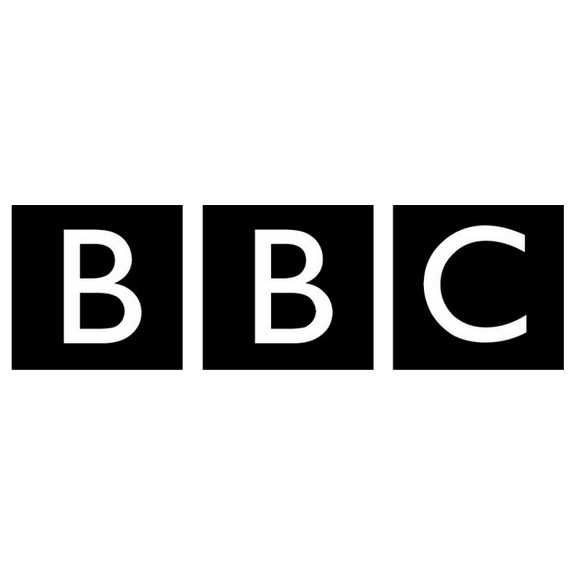It’s Perfectly OK to Call a Disabled Person ‘Disabled,’ and Here’s Why
By Brittany Wong — 2019
We’ve been taught to refer to people with disabilities using person-first language, but that might be doing more harm than good.
YOU MIGHT ALSO LIKE
CLEAR ALL
BY TOPIC
BY TEACHER
BY TYPE
FILTER

TOPIC
- ADD/ADHD (48)
- Romantic Relationships (39)
- Child’s Autism (25)
- Identity (23)
- Parenting (23)
- Well-Being (23)
- Discrimination (22)
- Young Adult Well-Being (22)
- Self-Development (19)
- Self-Mastery (19)
- Emotional and Mental Health (18)
- Growth Mindset (17)
- Self-Discovery (17)
- Social Presence (17)
- Intimacy (16)
- Social Justice (16)
- Synesthesia (16)
- Work Challenges (16)
- Access to Education (15)
- Creative Well-Being (15)
- BIPOC Well-Being (14)
- Imagination and Creativity (14)
- Adaptability (13)
- Body Image (13)
- Self-Acceptance (13)
- Speaking Your Truth (12)
- Depression (11)
- LGBTQIA Well-Being (11)
- Marriage (11)
- Belonging (10)
- Connection (10)
- Fellowship and Community (10)
- Friendship (10)
- Learning Styles (10)
- Relationship with Time (10)
- Sexuality (10)
- Activism/Service (9)
- Asking for Help (9)
- Conflict Resolution (9)
- Offering Support to Others (9)
- Productivity (9)
- Sex (9)
- Social Responsibility (9)
- Anxiety (8)
- Habits of Mind (8)
- Self-Esteem (8)
- Self-Reliance (8)
- Women’s Well-Being (8)
- Acceptance (7)
- Black Well-Being (7)
- Emotional Intelligence (EQ) (7)
- Empowerment (7)
- Focus (7)
- Highly Sensitive People (7)
- Inspiration (7)
- Neuroscience (7)
- Personal Development (7)
- Transgender Well-Being (7)
- Body Positivity (6)
- Child’s ADD/ADHD (6)
- Children’s Well-Being (6)
- Community Healing (6)
- Finding Meaning (6)
- Happiness (6)
- Identity Shifts (6)
- Leadership (6)
- Physical Health (6)
- Positive Thinking (6)
- Self-Actualization (6)
- Self-Care (6)
- Self-Worth (6)
- Anger (5)
- Athlete Well-Being (5)
- Authenticity (5)
- Empathy (5)
- Entrepreneurship (5)
- Family Dynamics (5)
- Life-Altering Injury (5)
- Managing Energy (5)
- Mindfulness (5)
- Motivation (5)
- Nonbinary Well-Being (5)
- Search for Purpose (5)
- Self-Expression (5)
- Social Anxiety (5)
- Values (5)
- Cancer (4)
- Caregiver Well-Being (4)
- Compassion (4)
- Confidence (4)
- Connection with Nature (4)
- Exercise (4)
- Gender Identity (4)
- Gratitude (4)
- Household Labor (4)
- Living as an Empath (4)
- Living with Illness (4)
- Meditation (4)
- Mental Health Challenges (4)
- Mindfulness Meditation (4)
- Negative Self-Talk (4)
- Nonviolence (4)
- Perception (4)
- Play (4)
- Problem Solving (4)
- Racial Identity (4)
- Resilience (4)
- Self-Healing (4)
- Stress (4)
- Transitions (4)
- Veteran Well-Being (4)
- Withholding (4)
- Work Relationships (4)
- Work-Life Balance (4)
- Anger Management (3)
- Chronic Health Conditions (3)
- Climate Change (3)
- Collaboration (3)
- Consciousness (3)
- Decision Making (3)
- Goal Setting (3)
- Honoring Emotion (3)
- Letting Go (3)
- Loneliness (3)
- Mind-Body Connection (3)
- OCD (3)
- Passive-Aggressive Behavior (3)
- Patience (3)
- Racism (3)
- Relationship with Money (3)
- Self-Control (3)
- Self-Reflection Practices (3)
- Suicide (3)
- Trauma (3)
- Trust (3)
- Aging (2)
- Awareness (2)
- Challenges with Teens (2)
- Criticism and Rejection (2)
- Cross-Cultural Dynamics (2)
- Diet and Nutrition (2)
- Digital Life (2)
- Dysfunctional Childhood (2)
- Family Acceptance (2)
- Fatigue (2)
- Fear (2)
- Female Friendship (2)
- Forest Bathing (2)
- Forgiveness (2)
- Functional Medicine (2)
- Generosity (2)
- Grit (2)
- Healthy Eating (2)
- Indigenous Well-Being (2)
- Interdependence (2)
- Intuition (2)
- Journaling (2)
- Kindness (2)
- Latinx Well-Being (2)
- LGBTQIA Relationships (2)
- Love Languages (2)
- Memoir (2)
- Mentoring (2)
- Military to Civilian Re-entry (2)
- Mindfulness Practices (2)
- Misophonia (2)
- Motherhood (2)
- New Relationships (2)
- Othering (2)
- Positive Psychology (2)
- Positive Self-Talk (2)
- Racial Discrimination (2)
- Retirement (2)
- Self-Compassion (2)
- Self-Limiting Beliefs (2)
- Self-Love (2)
- Self-Pressure (2)
- Sleep (2)
- Spiritual Life (2)
- Storytelling (2)
- Stress Management (2)
- Unconscious Bias (2)
- Weight Concerns (2)
- Work Ethic (2)
- AAPI Well-Being (1)
- Academic Struggles (1)
- Affirmations (1)
- Boundary Confusion (1)
- Brain Health (1)
- Breathwork (1)
- Buddhism (1)
- Building Culture (1)
- Burnout (1)
- Child Depression (1)
- Child’s Challenging Behavior (1)
- Child’s Emotional Growth (1)
- Child’s Trauma (1)
- Chronic Pain (1)
- Codependency (1)
- Comparing Belief Traditions (1)
- Compassion Meditation (1)
- Competition (1)
- Courage (1)
- Cross-Cultural Parenting (1)
- Curiosity (1)
- Death or Loss of a Loved One (1)
- Disconnection (1)
- Divorce and Breakup (1)
- Eating Disorders (1)
- Ego (1)
- Ego Transcendence (1)
- Energy Healing (1)
- Foster Parenting (1)
- Freedom (1)
- Gender Discrimination (1)
- Habit Formation (1)
- Human Potential (1)
- Humility (1)
- Infidelity (1)
- Inner Life (1)
- Inner Peace (1)
- Inner Strengths (1)
- Integrative Medicine (1)
- Intention (1)
- Jealousy/Envy (1)
- LGBTQIA Parents (1)
- LGBTQIA Sexuality (1)
- Life Force Energy (1)
- Longevity (1)
- Loss of Partner/Spouse (1)
- Love (1)
- Lovingkindness Meditation (1)
- Masculine/Feminine Dynamics (1)
- Memory (1)
- Men’s Well-Being (1)
- Narcissism (1)
- Neuroplasticity (1)
- Neuropsychology (1)
- Obsessions/Compulsions (1)
- Optimism (1)
- PTSD (1)
- Quantum Physics (1)
- Racial Healing (1)
- Racial Justice (1)
- Rest (1)
- Self-Discipline (1)
- Self-Realization (1)
- Self-Reckoning (1)
- Shadow (1)
- Shame (1)
- Sleep Disorders (1)
- Social Psychology (1)
- Soul Mission (1)
- Spiritual Growth (1)
- Spirituality and Health (1)
- Spirituality and Politics (1)
- Suffering (1)
- Talk Therapy (1)
- The Divine (1)
- Time Management (1)
- Trauma Healing (1)
- Unfulfilled Career (1)
- Visualization (1)
- Wake-Up Calls (1)
- Whiteness (1)
- Willpower (1)
- Zen Buddhism (1)
- Zen Meditation (1)
FILTER

TEACHER
- Stan Tatkin (3)
- Tara Brach (3)
- Adam Grant (2)
- Andrew Solomon (2)
- Brendon Burchard (2)
- Esther Perel (2)
- Jay Shetty (2)
- john a. powell (2)
- John Gottman (2)
- Lori Gottlieb (2)
- Oprah Winfrey (2)
- Richard Davidson (2)
- Shakti Gawain (2)
- Amma (1)
- Amy Morin (1)
- Andy Puddicombe (1)
- Carol Dweck (1)
- Chan Khong (1)
- Connie Zweig (1)
- Debbie Ford (1)
- Deepak Chopra (1)
- don Jose Ruiz (1)
- don Miguel Ruiz (1)
- Elaine Aron (1)
- Eric Maisel (1)
- Ethan Nichtern (1)
- Gay Hendricks (1)
- Harville Hendrix (1)
- Helen LaKelly Hunt (1)
- Jacqueline Carter (1)
- Jennifer Peepas (1)
- Judith Orloff (1)
- Julie Schwartz Gottman (1)
- Kathlyn Hendricks (1)
- Light Watkins (1)
- Lorin Roche (1)
- Mark Wolynn (1)
- Martha Beck (1)
- Melanie Joy (1)
- Rich Fernandez (1)
- Rich Roll (1)
- Richard Saul Wurman (1)
- Rick Hanson (1)
- Robert Augustus Masters (1)
- Sally Kempton (1)
- Sandra Ingerman (1)
- Shefali Tsabary (1)
- Socrates (1)
- Sue Morter (1)
- Sylvia Boorstein (1)
- Tony Robbins (1)
- Wim Hof (1)









